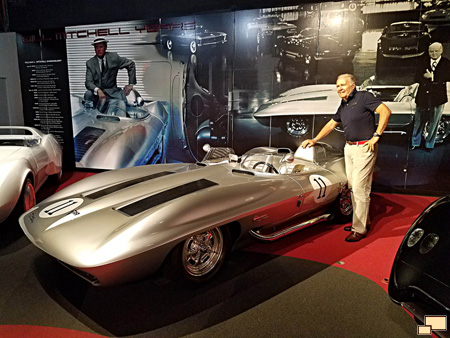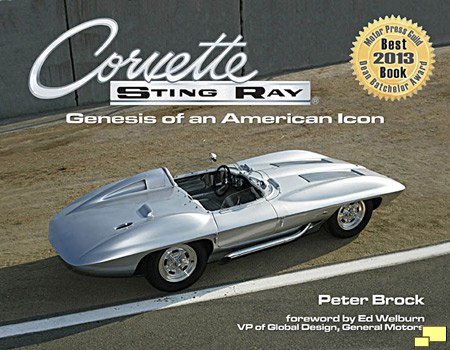Corvette Generations:
C1 C2 C3 C4 C5 C6 C7 C8
Corvette: Year by Year
1953 1954 1955 1956 1957 1958 1959 1960 1961 1962 19631964 1965 1966 1967 1968 1969 1970 1971 1972 1973 1974
1975 1976 1977 1978 1979 1980 1981 1982 1983 1984 1985
1986 1987 1988 1989 1990 1991 1992 1993 1994 1995 1996
1997 1998 1999 2000 2001 2002 2003 2004 2005 2006 2007
2008 2009 2010 2011 2012 2013 2014 2015 2016 2017 2018
2019 2020 2021 2022 2023 2024 2025
1959 Sting Ray Racer at Elkhart Lake racetrack, June 1959. Photo: GM Archives
The 1959 Sting Ray Racer was Bill Mitchell's (GM Vice President and head of Design Staff from 1958 to 1976) brainchild. During a 1957 visit to the Turin Auto Show, his keen eye was drawn to a low, aggressively streamlined form draped over a miniature racing car. It was a Fiat, heavily worked on by famed tuner Abarth and styled by coachbuilder Pininfarina. It had a very low wind cheating shape known as the "streamliner" theme with four distinctive blips above each wheel which allowed the rest of the body surface to be very low.
That mercurial moment - centered on the blips above the wheels - would lead to the creation of the Sting Ray Racer and forever change Corvette history.
Above: 1952 Alfa Romeo Disco Volante, which Bill Mitchell also admired. Notice the belt line around the entire car separating the lower and upper halfs which would become an important styling element of the 1959 Sting Ray Racer and the C2 Corvette.
In 1957 the AMA (Automobile Manufacturer's Association) instituted a ban on everything related to "performance" which included all competition activities and extended to advertising in which all references to power or speed were forbidden. While under the guise of "public safety" the real issue was economics as the bean counters felt spiraling competition costs were too much of a drag on the bottom line. The new rule was strictly enforced, with punishment possibilities including losing your job. Still there were many brave and dedicated people who devised end runs around the ban, including Bill Mitchell and members of his staff.
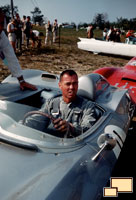
Above: Dr. Dick Thompson, aka "The Flying Dentist" in the 1959 Stingray Racer at Marlboro Motor Raceway, c. June 1959.
Left: 1959 Sting Ray Racer at Watkins Glen, September 1960 with Dick Thompson driving. It had been painted silver recently and has stayed silver to this day.
To get around an industry wide racing ban, Bill Mitchell (above, with the Sting Ray Racer and his 1961 Corvette Mako Shark) purchased a mule (industry term for a prototype used for testing and development) chassis and proceeded with a private racing endeavor. A small crew of designers that was part of Research Studio B which was under the radar of the higher level GM executives was responsible for transforming Mitchell's ideas into reality. Since the car was owned by Bill, it carried no GM, Chevrolet or Corvette labels until it was purchased by GM.
The wheelbase for the Sting Ray Racer was 92 inches, 10 inches shorter than the standard 1959 Corvette. Overall body length was 175 inches, only a bit shorter than the 177.5 inch '59 Corvette. Weight was around 2,100 lbs., about 1,000 lbs. less than the 1959 Corvette. The frame was not related to the stock Corvette and consisted of steel tubing. The front suspension was a short / long arm and the rear was a deDion design, which can be thought of as halfway between a straight axle (as seen on 1953 to '62 Corvettes) and an independent arrangement, as on 1963 and later 'vettes. The differential was a quick change Halibrand unit. Originally the braking was via finned drums which proved themselves a serious competition disadvantage. Four wheel disk brakes were eventually fitted. The suspension featured coil springs on all four corners.
The body skin was made of comparatively thin fiberglass backed up with aluminum reinforcement which was eventually replaced with balsa wood. The engine compartment featured a mechanical fuel injected small block with aluminum radiator and high compression cylinder heads.
As originally built by Bill Mitchell, the 1959 Sting Ray Racer did not carry any GM, Chevrolet or Corvette identification. After it was purchased by GM, it was painted silver and featured at the 1961 Chicago Auto Show. A passenger windshield was also added. The insignia, the same as used on 1963 Corvettes, was added in 1961.
The evolution of the 1959 Sting Ray Racer to the 1963 Chevrolet Corvette Sting Ray (below) is evident.
Peter Brock, who worked on the design of the 1959 Sting Ray Racer, poses with it at the National Corvette Museum in 2017.
Next: 1959 Sting Ray Racer Part 2
1959 Sting Ray Racer Photographs
1959 Sting Ray Racer GM Photographs
Harley Earl's 1963 Corvette
EX-122: The Original
Corvette Moray
Return to Special Corvettes


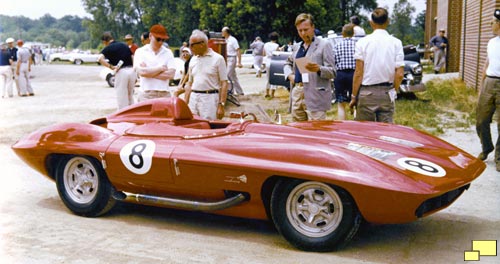
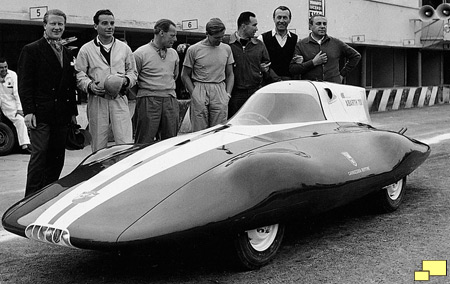
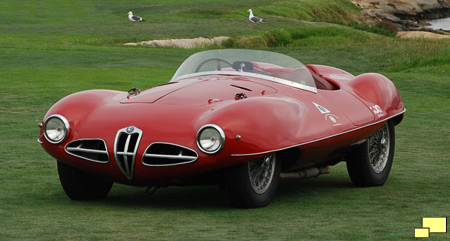
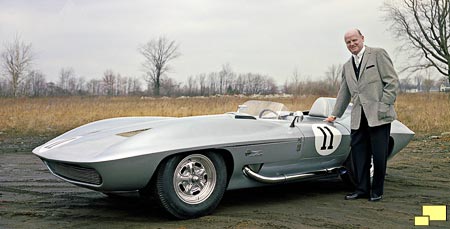
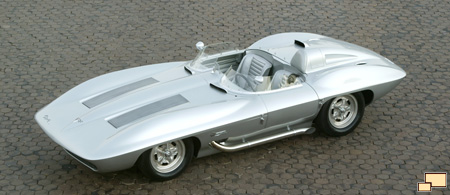
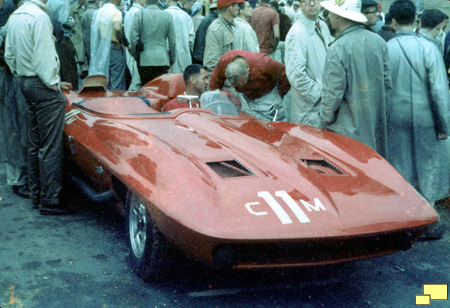
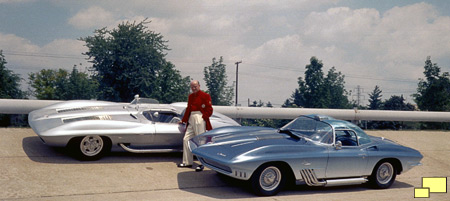
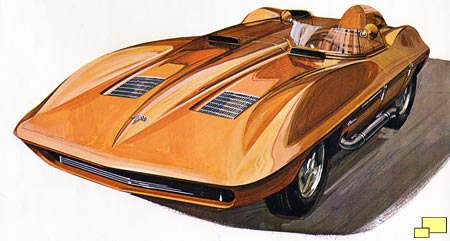
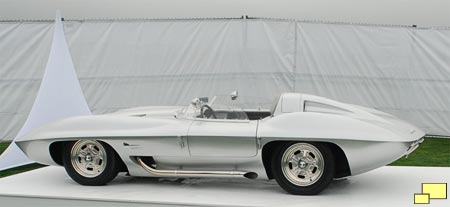
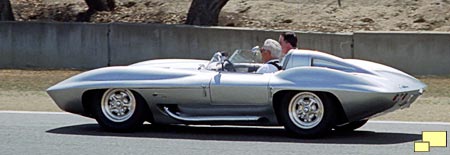

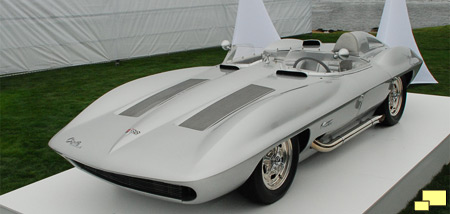
A_a_s.jpg)
